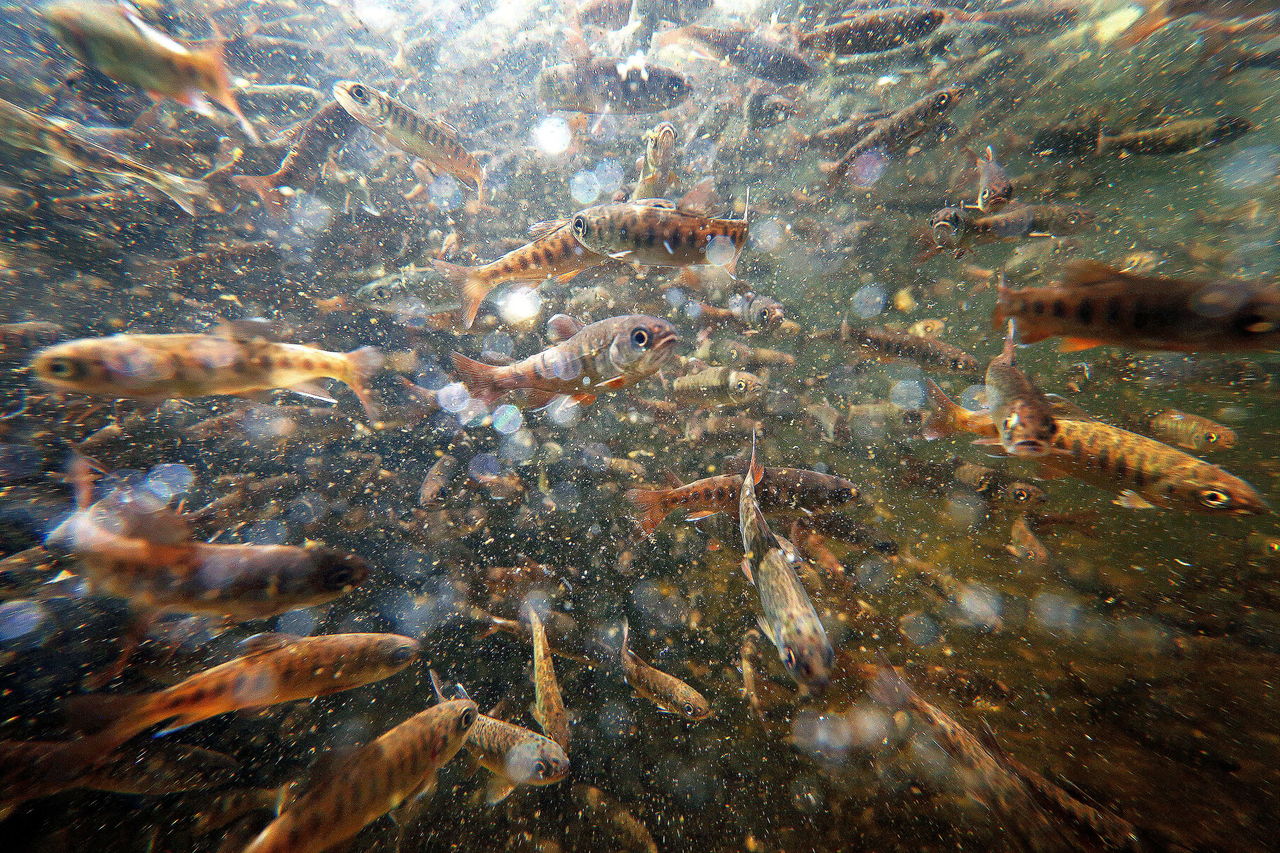EVERETT — It could be another year of low coho in SnohoCo.
The state Department of Fish &Wildlife last week met with area fisheries managers and released their forecast for the coming salmon seasons.
The big takeaway is that it’s going to be a bad year for coho salmon all over the state. Most other salmonid species aren’t expected to fare too well either.
The salmon season in 2015 was particularly anemic, thanks to a triple wallop of low levels of snowmelt leading to low-flowing and warmer streams, an intense summer drought and “The Blob,” an unmoving mass of warm ocean water in the north Pacific that threw off the natural rhythms of the marine ecosystem.
The Blob was still there when the coho smolts migrated out to the ocean last year.
The Blob might now be gone, but it’s been replaced by an El Niño weather system, which also brings warm water into the North Pacific.
“It’s going to be a difficult road forward carving a fishing season out of this,” said Jenni Whitney, a biologist with Fish &Wildlife’s Region 4 field office in Mill Creek.
This year, the low expected forecast of coho returns is expected to put a damper on fishing season statewide.
In Snohomish County, projections for both the Snohomish and the Stillaguamish rivers are way below the 2015 estimates.
The expected return of wild coho in the Snohomish for 2016 is just 16,740 fish, a little more than 10 percent of the 2015 projection of 151,549.
In the Stillaguamish, it’s even more anemic: 2,770 wild coho expected to return, compared with last year’s projection of 31,263.
Even the 2015 projections were off the mark. Only 13,000 returned to the Snohomish, while just 2,500 returned to the Stillaguamish, according to fisheries managers.
That’s the lowest on record for both rivers.
The next lowest rate of return in the Snohomish was more than twice that amount, Whitney said, and that was in the 1970s.
Diego Holmgren, the fisheries manager for the Tulalip Tribes, said that the forecast for the Snohomish River in 2015 was more than 100,000 fish. That’s why the meager run of 13,000 fish was such a surprise.
“Over the past five years we’ve seen 90,000 spawners, on average,” Holmgren said. Projections are based on a variety of factors, starting with the number of smolts that migrate outward.
In order to find out how many fish will survive their year in the ocean, biologists also have to take into account ocean conditions, food supply and weather patterns — factors that can’t be easily predicted or measured.
The Blob and El Niño both upset the natural cycle, resulting in smaller fish runs and less healthy fish.
Coho juveniles rely on invertebrates such as copepods and krill-like euphasids for food.
Those invertebrates native to cold northern waters get displaced by the arrival of warmer water masses from the south, bringing with them populations of the invertebrates that are less fatty than their northern counterparts.
“The fish are eating them, but they’re not getting the fat they need,” Holmgren said.
That factor, plus low levels of escapement last year, means a low rate of return is a safe bet for 2016.
“We really messed up the forecast last year,” said Jason Griffith, a fisheries biologist for the Stillaguamish Tribe. “There was a bust throughout Puget Sound with people forecasting much greater returns than actually happened.”
Firmer numbers won’t be known until the coho return to the river systems in late summer and early fall.
“The Stillaguamish this year is probably in the toughest position that I’ve seen,” Griffith said.
Most of the other salmonid species are in a similar situation as coho, but there are a few bright spots.
The Baker River sockeye run in Skagit County is expected to be 55,054 fish, large enough for a fishery, whereas the Lake Washington run is still below conservation goals, said John Long the intergovernmental salmon manager for Fish &Wildlife.
“We haven’t had a recreational fishery on Lake Washington sockeye since 2006,” Long said.
Likewise, the Columbia River chinook run is expected to be healthy, with nearly 1 million fish expected. That’s still lower than the 2015 record of 1.3 million chinook in the Columbia.
The forecast for Puget Sound is much lower, with only about 165,000 chinook returning, most of which are hatchery fish.
The Pacific Fishery Management Council, composed of federal, state and tribal fishery managers, plans to adopt final ocean fishing seasons and harvest at its meeting April 8-14 in Vancouver, Washington. The inland seasons and harvest will be set by the state and tribal co-managers at that meeting, too.
Chris Winters: 425-374-4165; cwinters@heraldnet.com. Twitter: @Chris_At_Herald.
Learn more
For more information, including meeting schedules, online comments and the salmon forecasts, go to Fish &Wildlife’s webpage at http://wdfw.wa.gov/fishing/northfalcon.
Talk to us
> Give us your news tips.
> Send us a letter to the editor.
> More Herald contact information.

























